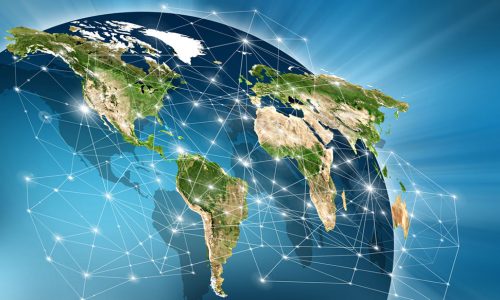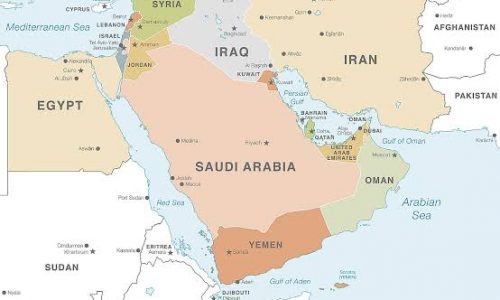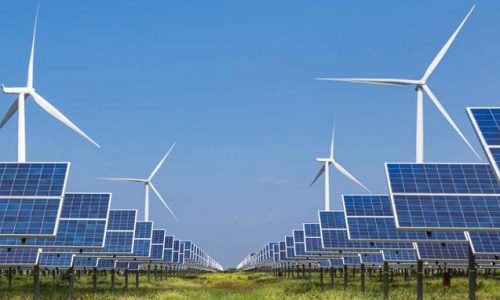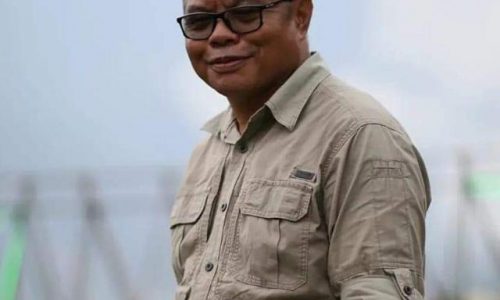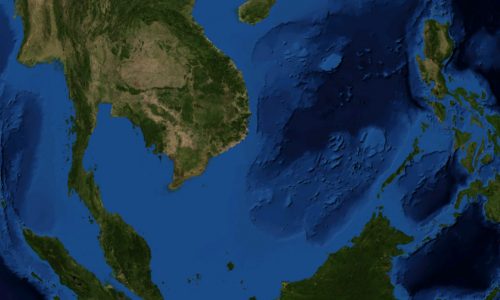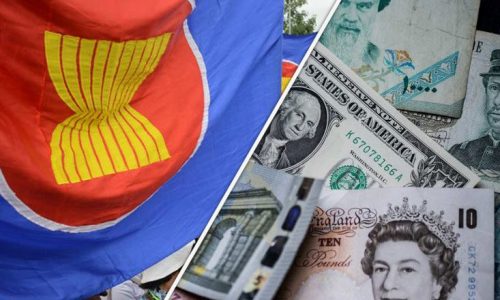By Nikolaus Loy, a lecturer on international relations at the UPN Veteran, Yogyakarta
Indonesia is enduring a rice crisis. CNN Indonesia reported on February 23, 2024 that the price of rice has reached Rp 18,000 (US$1.1)/kg. Apart from rice, soya, chillies and sugar also often create a fuss in Indonesia when prices spike.
Soybeans are the raw material for tempeh and tofu − popular food for Indonesians. The phrase ‘morning tempe, afternoon tofu’ illustrates the inconsistency of words and attitudes. It also represents how important these two are to the families of ordinary Indonesians.
Rice is the staple food of Indonesians. You haven’t had your meals if you haven’t eaten rice. Rice defines the Indonesian menu. Without rice, the menu lacks Indonesian flavor. It can be said, ‘I eat rice, then I am Indonesian’.
A derivative of rice, rice flour is the basic ingredient of festival cakes. Although there are wheat and wheat flour, rice flour is the main choice.
Rice politics under the New Order
So important was rice that the New Order government (1969-1998) placed rice production at the top of its agricultural policy agenda. After consolidating power during 1965-1969, Soharto stepped on the gas to increase agricultural production. Rice production became an important agenda since the first five-year development plan (REPELITA) of 1969-1974.
Repelita II (1974-1979) and III (1979-1984) also emphasized the availability of rice and other foodstuffs. In 1985, the FAO (Food and Agricultural Organization) rewarded Soeharto with a food self-sufficiency award. Actually, it was because he succeeded in making Indonesia self-sufficient in rice. In 1984, rice production reached 25.8 million tons (Bisnis.com).
After rice was sufficient, starting in Repelita IV (1984-1989), the New Order looked at industrial development. The need to encourage non-oil and gas exports was the reason behind this policy. After the oil bonanza in 1974, oil revenues fluctuated. There had to be a source of state revenue from other sectors. Low-wage manufacturing was the first choice.
Nonetheless, food production was never off the New Order’s development agenda. In Repelita V (1989-1994) the stabilization of food self-sufficiency became one of the main development agendas.
Rice politics, i.e. policies to maintain production and stabilize rice prices, were implemented through three strategies. First, the development of agricultural infrastructure such as dams, irrigation and fertilizer factories.
In a speech during the awarding of winners of the agricultural intensification competition on 22 June 1992, Soeharto said that one of the reasons for the construction of the cement factory was the need for irrigation and dams.
Second, the green revolution through the Bimas (mass guidance) and Inmas (mass intensification) programs. Through these two programs, farmers were encouraged to adopt agricultural technologies such as tractors, chemical fertilizers, insecticides and herbicides.
As part of this program, the New Order Government appointed tens of thousands of agricultural extension workers across Indonesia. Soldiers were also deployed through the ABRI Masuk Desa program to build agricultural infrastructure.
Third, the benevolent state allocated large funds for agricultural subsidies, especially subsidies for fertilizers, pesticides and seeds. Subsidies also encouraged farmers to grow soya, the raw material for tempeh.
In addition, the state maintained price stabilization by setting a floor price for grain and establishing the State Logistics Agency (BULOG). This organization was established in 1967.
It was initially tasked with providing monthly rice rations for civil servants, teachers and soldiers. Its duties were later expanded to buy rice from farmers when harvests were plentiful and sell it through market operations when rice prices rose due to drought or declining harvests.
The New Order had two reasons for maintaining high rice production, while keeping rice prices low. Firstly, political stability. Rice is the main food of Indonesians. Lack of rice can lead to impatience. Hungry people get angry quickly. Therefore, rice must not be scarce, and the price must be kept affordable. Rice scarcity can threaten political stability. Yet ‘stability for growth’ was the dogma of New Order economic development.
Second, the industrialization process. Indonesia started industrializing by building labor-intensive manufacturing. Textile, footwear and light electronics factories were built. In addition to meeting domestic demand, starting in the 1980s, the government encouraged exports.
A key factor in the competitiveness of light manufacturing in the international market was low labor wages. Low rice prices were part of the strategy to keep the cost of living for urban laborers low so that wages could also be kept low. In this way, Indonesia also became a favourite place for foreign investment in light manufacturing.
Post New Order
The political dimension of rice remained strong after the New Order. New Order rice politics focused on self-sufficiency. Post-New Order rice politics were underpinned by increasing rice imports. The New Order also imported rice several times when domestic production was insufficient. Nevertheless, domestic production remained a priority.
Presidents Susilo Bambang Yudhoyono (SBY) and Joko “Jokowi” Widodo have always promised and endeavored to increase domestic rice production. During his 2014 election campaign, Jokowi stated his determination to reduce rice imports by building food self-sufficiency, especially in rice, soya and corn. The self-sufficiency pledge was repeated during the first term of his administration (2014-1019).
In reality, Indonesia continued to buy rice from abroad. Statistics Indonesia (BPS) reported that Indonesia imported 844.2 tons of rice (2014), increasing to 1.3 million tons (2016). Rice imports declined in 2017, but rose again to 2.3 million tons (2018). The highest rice import figure occurred in 2023 at 3.1 million tons. Whereas between 2018-2022, rice imports did not reach 500 thousand tons on average (https://www.idxchannel.com/economics/).
The reason for imports is still the same: rice is politically sensitive and therefore supply and price stability must be guaranteed. The question then is why 10 years of SBY’s administration and 10 years of Jokowi’s, Indonesia failed to achieve rice self-sufficiency.
There are several possible explanations. First, the impact of decentralization. Regional autonomy has improved ‘good governance’ in the form of greater policy authority in the regions, greater participation of local institutions and greater autonomy of development administration. Center-region relations are also relatively equal and democratic.
The problem is that ‘good governance’ does not always result in ‘effective governance’. The second concerns how policies should be formulated democratically, but still be effective, efficient and speedy in implementation.
Under the authoritarian New Order regime, central control was very strong. In agriculture, Soeharto pressurised governors and regents to achieve agricultural production targets including the expansion of paddy fields and increased food production, especially rice. Those who failed were sanctioned, for example, not allowed to continue for a second term.
Decentralization has made coordination of agricultural policies longer and more difficult. Regional heads may also be more interested in promoting large-scale plantations such as palm oil and timber estates. These sectors promise greater local revenues than wet-rice production. The plantation industry can also be a source of political cost compared to smallholder rice farmers.
Second, market liberalization encourages farmers to plant other commodities that have more added value due to higher prices. The low price of rice, while the higher cost of fertilisers and pesticides discourages farmers from growing rice.
This situation then encourages land conversion. Farmers sell land for industrial estates, housing, tourism and other non-agricultural uses. The BPS report shows that the area of rice harvesting land fell from 10.66 million ha (2020) to 10.41 million ha (2021). The impact is that milled dry grain also fell from 54.65 million tons, to 54.42 million tons in those two years.
Third, the rent economy and rice politics. Rice politics under the Order was controlled by the centralized government. Rice imports were also relatively controlled. Centralization made room for a rent economy, although it existed, but with limited players.
Post-New Order, rice politics may be related to political rice. The second occurs when the provision of rice, in particular, through imports becomes a ‘gift’ to the supporting oligarchy. During this time, imports were carried out by Bulog with the involvement of partners.
Rice imports benefit the many parties involved. Just like the import of soya, salt and fuel imports before the dissolution of Petral. There is more profit (rent) than should be earned by the business groups appointed as partners. This profit is derived from the difference between the international market price and the higher domestic price.
The late economist Rizal Ramli, in a discussion at the Media Center of the House of Representatives on 20 September 2018, said that imports are maintained because they provide huge profits for those who are given food import quotas by the government. Instead of producing rice themselves, it is better to import it.
Cover
There is no strong and developed nation without a strong food sector. Even industrialiced countries in the European Union still maintain a common agricultural policy. Under this policy, European farmers are subsidized in order to be able to compete in the market. Rice is Indonesia. Indonesia is rice. Gaming the rice commodity, for example, by keeping domestic production low in favor of political ‘rice’ jeopardizes food security as well as socio-political stability.



